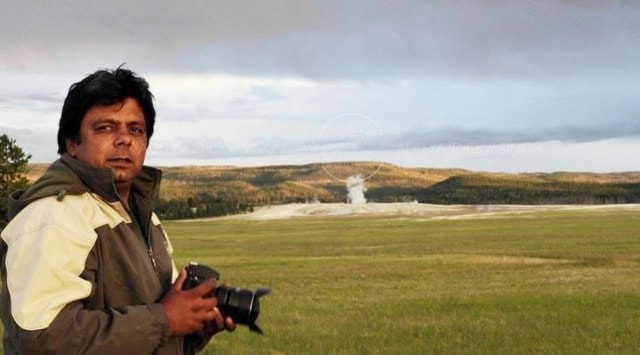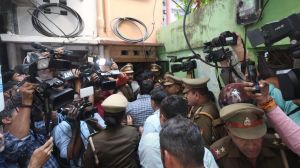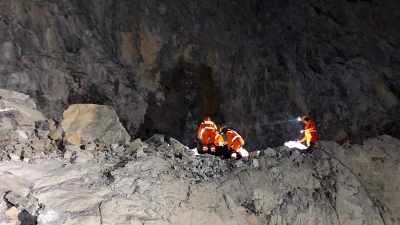Aditya ‘Dicky’ Singh, Ranthambore’s bureaucrat-turned-conservationist, dies at 57
He moved to Ranthambore in 1998 and spent the rest of his life there, working on wildlife documentaries, photography and conservation projects.
 Born in May 1966, Aditya had a background in sciences, earned a bachelor’s degree in engineering, subsequently cleared the Civil Services exam and worked as an IAS officer. (Instagram/ dickysingh)
Born in May 1966, Aditya had a background in sciences, earned a bachelor’s degree in engineering, subsequently cleared the Civil Services exam and worked as an IAS officer. (Instagram/ dickysingh) A wildlife photographer, conservationist, homestay owner and formerly a bureaucrat, Aditya ‘Dicky’ Singh died of a heart attack on Wednesday at the age of 57.
“The doctors said he passed away due to a heart attack. On Saturday he had a stent inserted and he was recovering from it,” said Dharmendra Khandal of Tiger Watch.
Born in May 1966, Aditya had a background in sciences, earned a bachelor’s degree in engineering, subsequently cleared the Civil Services exam and worked as an IAS officer. However, it was not long before he realised that his interests and calling lay in working with wildlife. So he moved to Ranthambore in 1998 and spent the rest of his life there, working on wildlife documentaries, photography and conservation projects.
He also started a small tourism business, a homestay now called Ranthambore Bagh, on the outskirts of Ranthambore.
However, one of the defining creations of his life is the 35-acre forest on the boundary of the Ranthambore National Park, which he cultivated to stop the woodcutting and illegal mining prevalent in the area.
View this post on Instagram
It was in 1999 when, while working on a documentary, Aditya came across the Bhadlav valley, where he spotted illegal stone mining and rampant woodcutting. While the ravines act as a buffer zone for the Ranthambore National Park, the land here was being flattened.
To stop the concentration of human activity, Aditya started buying land there, on the border of the national park, and decided to rewild it. As the trees grew and local flora and fauna populated the land over the years, it effectively blocked access to the immediate area around the national park for woodcutters and local villagers. Today, the lush green piece of land stands in sharp contrast to its surroundings.
Though he got lucrative offers worth crores of rupees for the land, Aditya never agreed to part with it and till date it remains a non-commercial property.
“I have lost a good friend of over 20 years,” said Arijit Banerjee, a senior bureaucrat in the Rajasthan government, also a wildlife photographer. Banerjee remembers Aditya as “big-hearted person who gave back to the community”. “He was always eager to help the (Ranthambore) field staff and the families living around Ranthambore. He used the money he won from awards to pay for the education, food, hostel charges of children (preparing for competitive exams and) hailing from families living around Ranthambore. He was a very generous person,” the bureaucrat said.
Khandal, of Tiger Watch, said, “He was of a very jovial nature. Everyone in the Ranthambore tourist circle knew him and was connected with him. He also helped the forest department. And initially, it even included things like the census.”
View this post on Instagram
“He had an impressive knowledge and inspired a lot of people and motivated them. He used to keep everyone—be it the guide, the drivers or the staff—close to him and helped them develop themselves,” he said. “He was an engineer and a Himachal Pradesh-cadre bureaucrat but left it all to pursue his passion. But the scientific and factual approach showed in his words and actions.”
Khandal described Aditya as “one of the world’s best tiger photographers”. “World’s top photographers and filmmakers used to spend time with him and understand how and where they should shoot videos etc,” he said.
In Ranthambore, Aditya worked as a field assistant/line producer for over a dozen wildlife documentaries for the BBC Wildlife Division, National Geographic Film and Television, Japan’s NHK Broadcasting Service, Irish television and many independent productions. He also assisted some of the best names in wildlife photography in the world.
Aditya was also the recipient of the prestigious Carl Zeiss Award for Conservation (2012) and Sanctuary Wildlife Photographer of the Year (2011), among other accolades. He was also known to keep one of the largest collections of still images from the Ranthambhore Tiger Reserve, clicked over two decades.
He is survived by his wife Poonam Singh, an entrepreneur, sculptor and a fashion designer, and daughter Nyra Singh.







